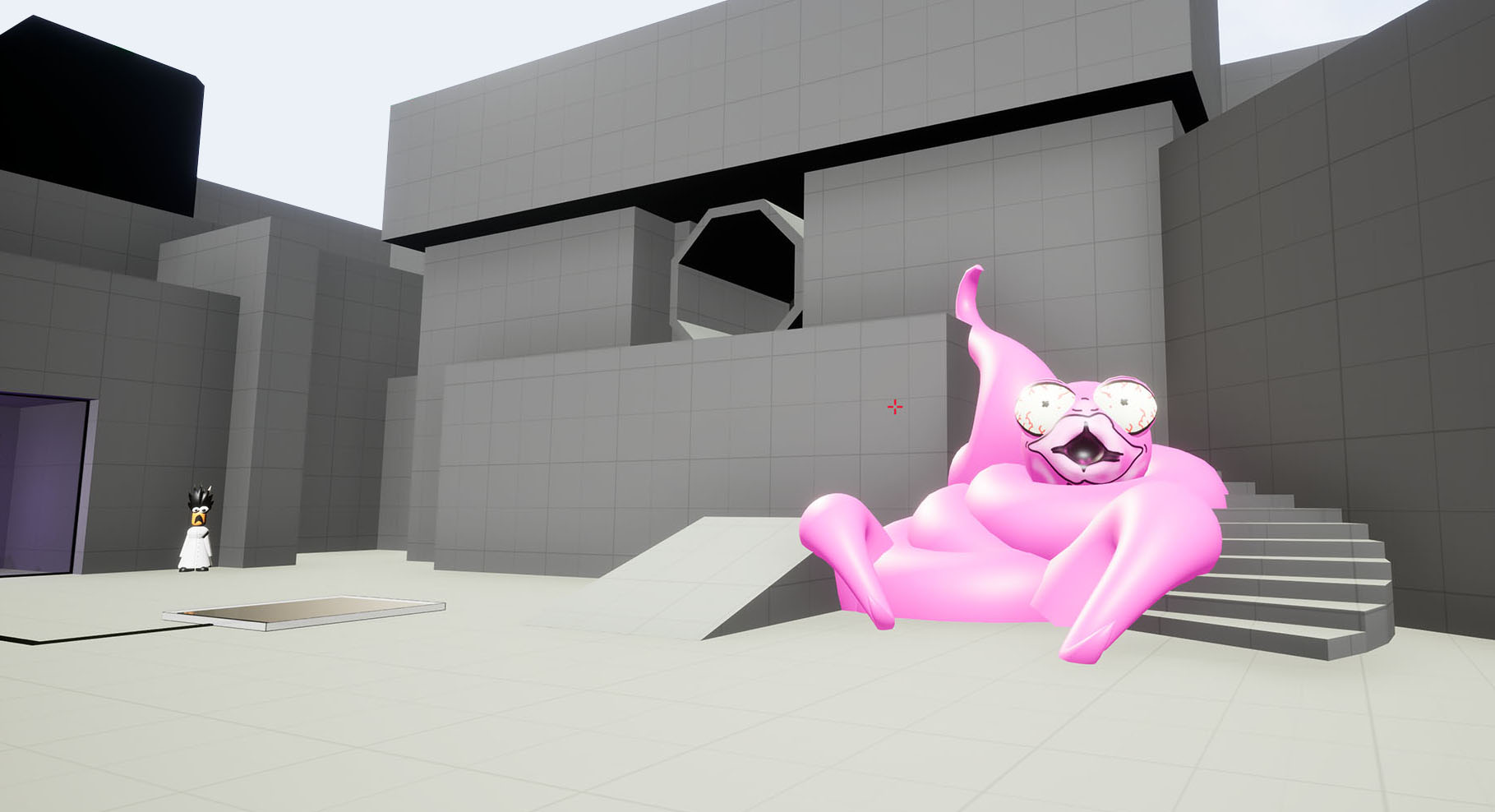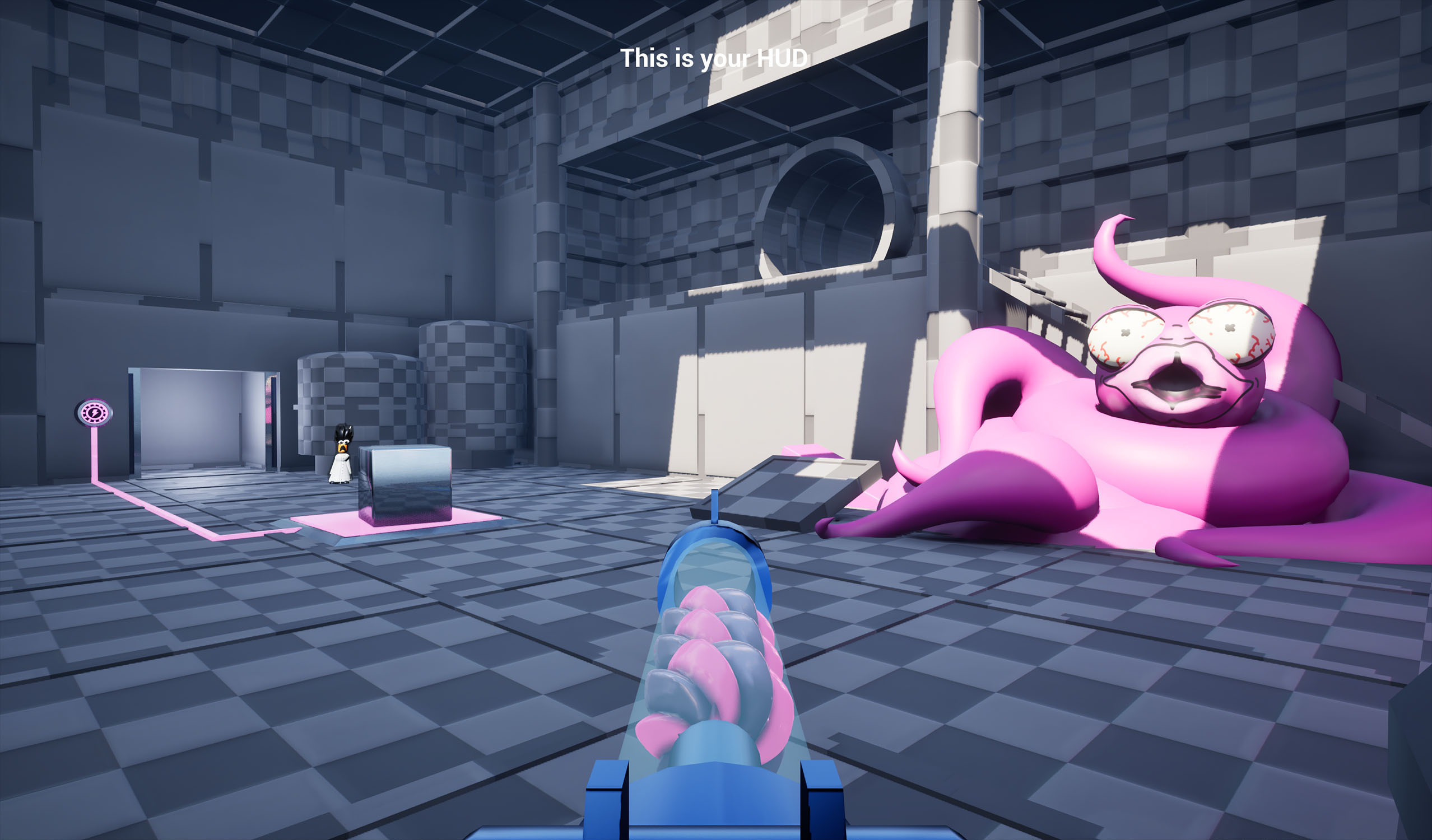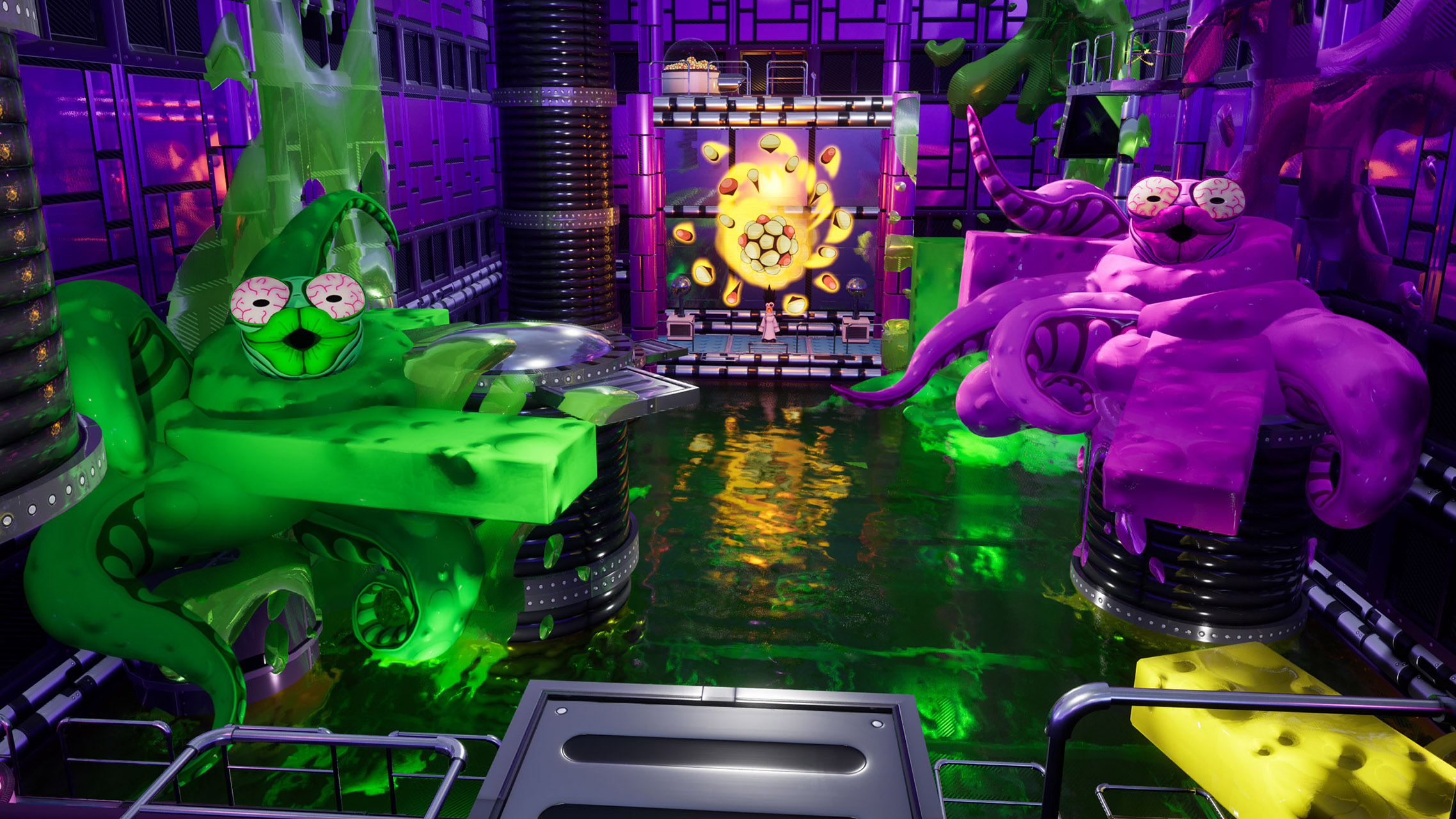Evolution of a Room
Game designers often struggle to learn from past experience and get tempted into making the same mistakes. I've had the luxury of working with fantastic level designers and environmental artists in the past. So when I'm designing a space, I have to make sure I don't take for granted the work it will take to bring that space to a final polished visual quality.
Sourpuss has been an exercise in thinking small, in terms of digital real estate. Not because I wanted to limit creative potential, but as an attempt to learn from the times I've designed spaces too large and have been unable to bring them up to the quality level they deserve.
I'm not a meticulous documentarian, but I do take regular screenshots of my works-in-progress. So I have an example to share, one of the first puzzle rooms in Sourpuss.
PUZZLE ROOM #1 - GRAYBOX

This is the original graybox version of the first puzzle room. It's dead simple and designed to teach the player the most basic features of the game. There is no ceiling because it was not required and only got in the way of iteration. Both of the main NPCs are represented in the room, the Sourpuss alien blocking player progress, and the Freaker scientist who offers some words of encouragement (kind of). The progression route should be obvious, a big round tunnel that's too high up for you to reach.
PUZZLE ROOM #1 - BLOCKOUT

Next came the blockout phase. Now I need to stress that the entire gameplay experience was completed in graybox (all of the puzzle rooms) before returning to this room to begin the next phase. I was confident in the overall scope of play and ready to take the level design further in this iteration. All of the world geometry was replaced by custom 3d mesh tiles, to replace the walls, ceilings, and floors.
Some basic concepts for lighting and color began to be introduced. Collision was applied to make a sure gameplay functioned as intended. The space was ready for texture and material work to begin.
PUZZLE ROOM #1 - PUBLIC RELEASE (v1.000)

Here is a screenshot of the same room from the first public release. NPC artwork and animation had to progress to shipping quality. All of the surfaces have model and normal map details applied. Light sources, decals, and reflections work together to give the space an elevated cartoony look.
But the space is still unfinished. Some details, like the black and white signage need to be replaced. This space also has not benefited from a clutter pass yet. I would like to add more cords, blinking lights, and some physics objects that can be knocked over, to give the space a more interactive feel. There are also opportunities to add curved surfaces to break up the boxy 90-degree angles which generally dominate the view.
ITERATION AND EVOLUTION
So the point of this post is a reminder to myself, that everything takes longer to complete than originally anticipated, and that it's never really done, because you can always keep iterating and evolving a space.
I also want to remind myself that each iteration of the world was built free-from in a new Unreal level file. I didn't overlay the geometry to ensure the space matched. Instead I took a few key measurements and let myself rebuild the space as needed. This room in particular didn't change too much, but some of the other puzzle rooms went through drastic re-shaping, but kept the same puzzle fundamentals the same. I feel like affording that freedom and allowing for some redundant work ultimately improves quality because you can experiment with the space and test your assumptions about what will work.
MORE SPACES
I'm in the process of archiving a lot of my dev files now after the first public release. I did find another room that demonstrates dramatic evolution. The "pit" puzzle room.


Thanks for taking a look at this devlog, and I hope you'll give the game a download.
Get Sourpuss
Sourpuss
First person puzzle solving, with aliens!
| Status | In development |
| Author | Tylak |
| Genre | Adventure, Puzzle |
| Tags | Aliens, Cartoon, Controller, First-Person, No AI, Non violent, Sci-fi, Unreal Engine |
More posts
- Sourpuss v1.0017 days ago

Leave a comment
Log in with itch.io to leave a comment.